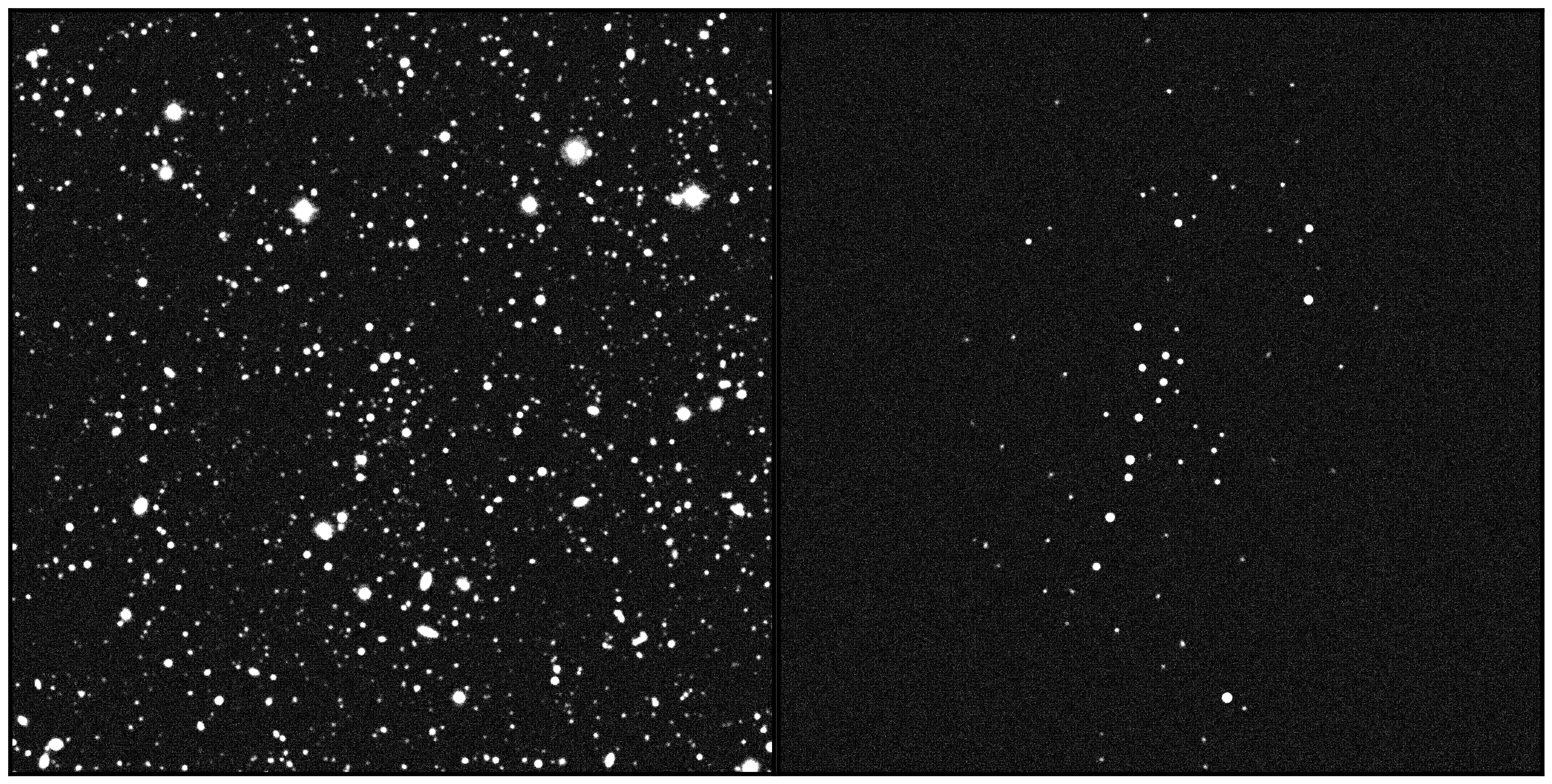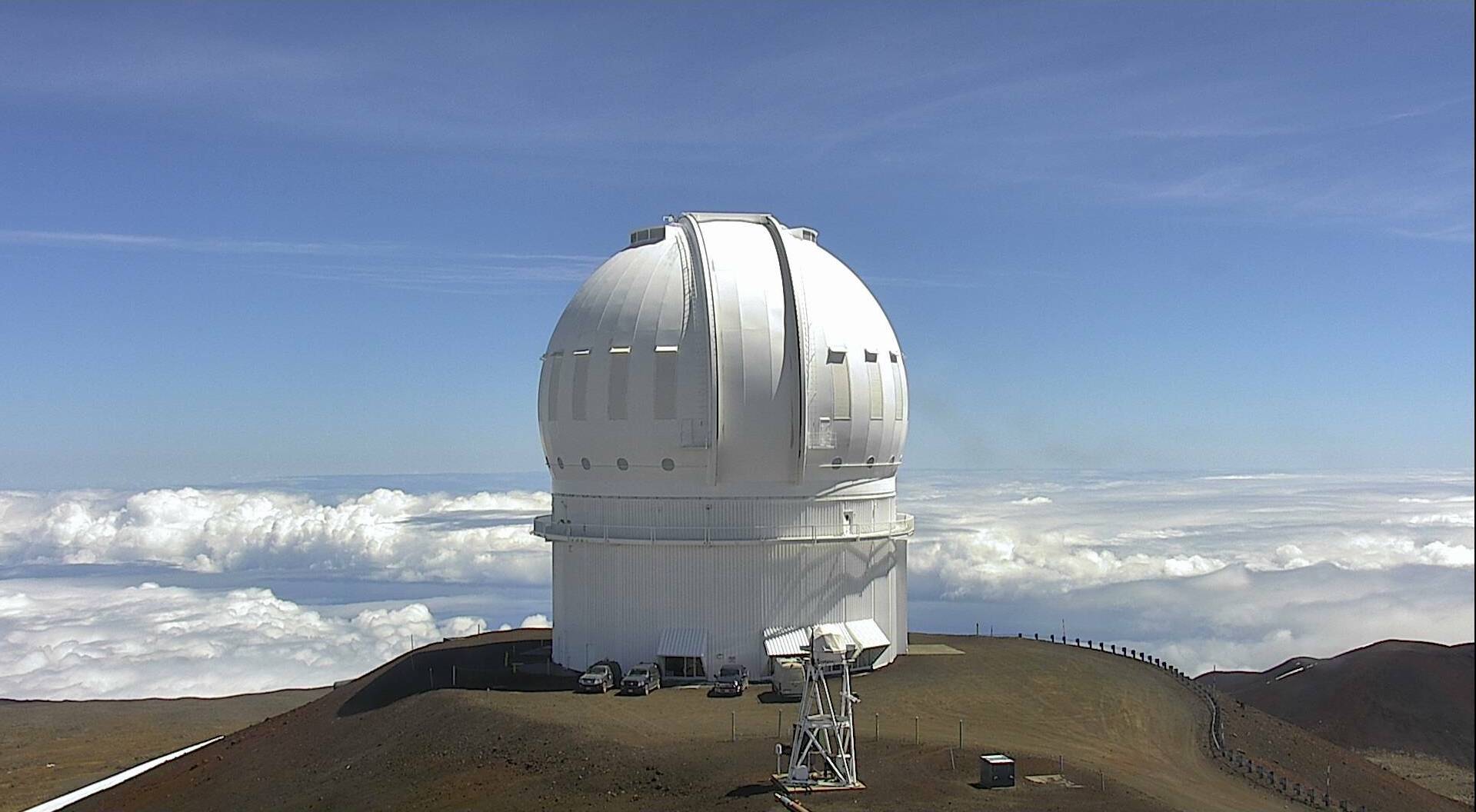Queued Service Observations
Since 2008, the vast majority of the observations performed at CFHT are conducted under the Queued Service Observations (QSO) mode. QSO started in 2001 with CFH12k, and is now used with MegaCam (2003), WIRCam (2005), ESPaDOnS (2008), SITELLE (2015), and SPIRou (2019A).
| QSO Users: Enter the QSO site! |
The main concept behind the QSO mode is to execute programs only during the sky conditions (seeing, background, clouds, etc.) requested by Principals Investigators (PIs) in order to meet the programs' science goals. This is achieved by grouping all programs in a database and by selecting appropriate observations according to a set of constraints, rules, and sky conditions. Programs are then carried out by a well trained, local team of observers in a service mode (i.e. investigators are not present at the observatory).
The Queued Service Observing mode used at CFHT offers many advantages over Classical Observing:
- higher efficiency on the sky (because Remote Observers are highly trained and observe frequently)
- high priority given to the most important projects (i.e., those highly ranked)
- observations carried under constraints specified by PIs (e.g. Image Quality requirement)
- observations carried at a specific time on a specific night, if needed (e.g. for an exoplanet transit)
- very short observations possible (e.g. 2 hrs or less)
- unexpected and short notice events can be observed (e.g. Gamma Ray bursts)
In addition to performing the observations for the PIs, CFHT also pre-reduces all data to remove instrumental signatures (for our visible imager MegaCam and our infrared imager WIRCam), or reduces the data from beginning to end to provide spectra (for our spectropolarimeters ESPaDOnS and SPIRou, and our optical imaging Fourier transform spectrometer SITELLE). Additional services such as Night Reports, Weather information, and calibrations are also offered.
The QSO Team
QSO Manager: N. Manset
QSO Operations Specialist: T. Burdullis
System Programmer: T. Vermeulen
Database Specialist: B. Mahoney
Remote Observers: A. Acohido, H. Januszewski, J. Silva,
L. Wells
Queue Coordinators: T. Burdullis, N. Manset, L. Arnold, D. Devost,
B. Epinat, H. Flewelling, V. Khatu, H. Januszewski,
L. Wells
Instruments Scientists
MegaCam: Heather Flewelling (heather -=at=- cfht.hawaii.edu)
WIRCam: Daniel Devost (devost -=at=- cfht.hawaii.edu)
ESPaDOnS: Nadine Manset (manset -=at=- cfht.hawaii.edu)
SITELLE: Benoît Épinat (epinat -=at=- cfht.hawaii.edu)
SPIRou: Luc Arnold (larnold -=at=- cfht.hawaii.edu)
Contact information
For questions related to QSO in general or to a prhogram conducted in QSO mode, please contact the QSO Team by sending an email to qsoteam -=at=- cfht.hawaii.eduCompletion policy for Large Programs
In November 2018, the SAC issued a
completion
policy for all Large Programs started in 2017A and onward. Starting
with a Large Program's mid-term review , a LP completion review will be
triggered if a LP has an expected program completion below 80%, and/or
SAC considers that the LP may not achieve the proposed science
goals. If the review is favorable, the LP will be allocated time in
future semesters in order to bring the program completion to at least
80%. Depending upon the available pool of future unallocated LP time
(considering the maximum fraction for LPs set by the agencies), these
allocations could be in semesters during and/or after the term.







